Creating Amazon Prime, the most successful and destructive membership program in Internet history

Amazon has not always been the king of online shopping. In the fall of 2004, Jeff Bezos’s company still mostly sold books and DVDs. She was besieged by many more successful competitors. Large retailers such as Best Buy grew by 17% per year, eBay was the main online vendor, and a large Toys R Us store sued Amazon to court so that it would not sell other toys on its website.
That season of holidays, from November to January, on the Amazon website there were constant failures, which caused a lot of noise both among buyers and the press. The company's price has reached $ 18 billion, but if you wanted to invest in it, any competent analyst would tell you that the future is definitely behind eBay - a younger company, which by that time was already worth $ 33 billion.
15 years have passed, and the world has changed. Amazon is worth more than $ 900 billion, and Jeff Bezos - the richest man in the world with a huge margin. More than half of all online shopping is done by Americans on a single website, and the company is slowly beginning to control dozens of seemingly unrelated industries, from content production to music distribution. The main reason for this is the Amazon Prime membership program, which is not very well known in our area and is rarely mentioned in the media.
This is the story of how the greatest innovation of the Internet era in the retail industry was invented and developed. From a ridiculous idea, contrary to any financial logic, to billions of dollars in profits and hundreds of millions of participants. Narrated by former top managers and key employees who have been there since day one.
Andrea Lee (former head of Amazon Prime in Canada)
It is difficult to reclaim yourself that year. At that time, we did not know what kind of e-commerce could take off. Will it be auctions? Will it be a subscription? Will it be sites with free shipping from a certain limit?
')
Vijay Ravindran (former Amazon Order Manager)
Then the team did not have the blind belief that any idea of Jeff will be successful. And we all resisted. Very famous people, who are now in high positions at Amazon, told me, "Don't let Jeff do this," "This is very bad for the company."
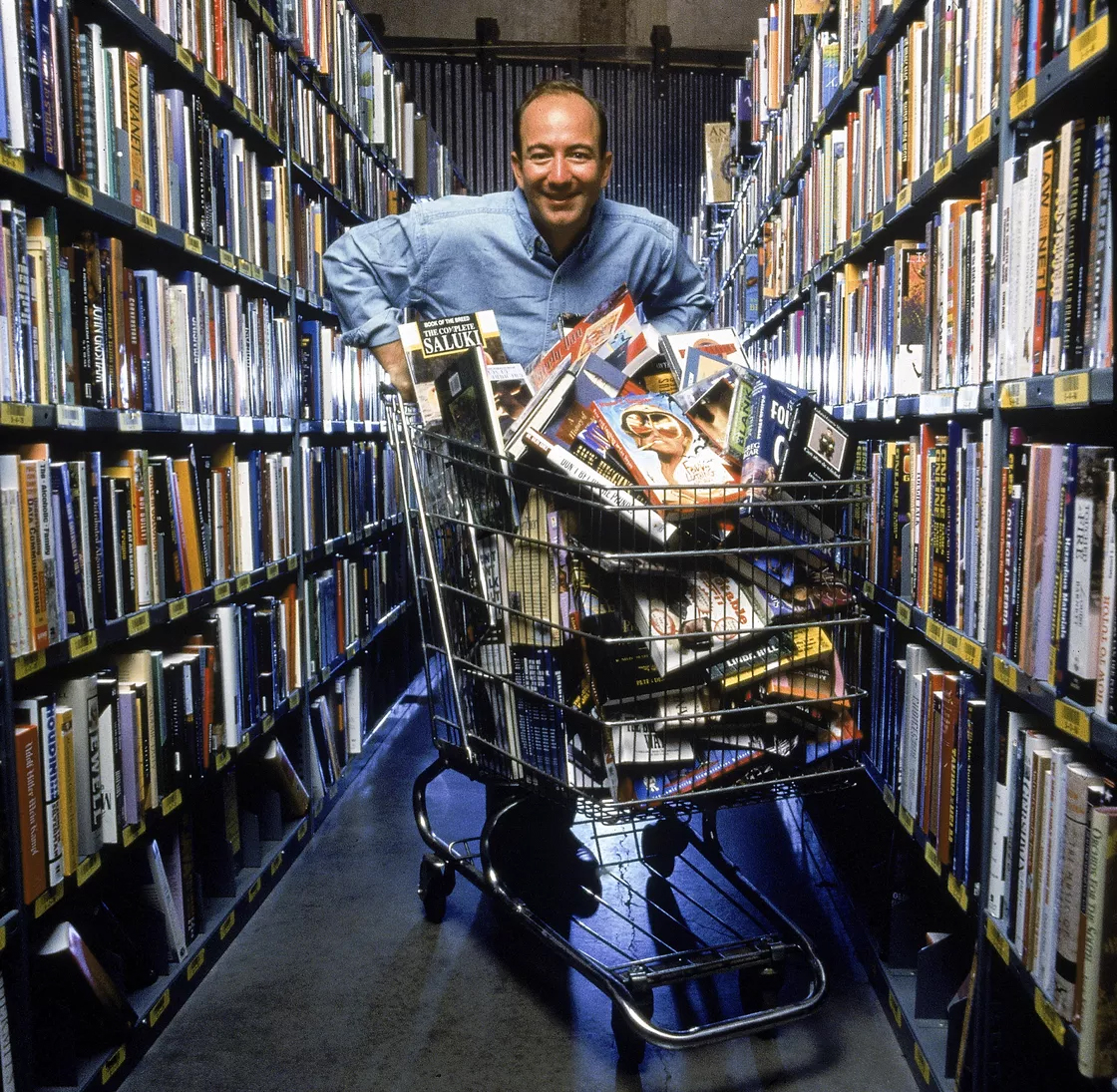
Jeff Bezos in Seattle in 1998
"This" was the Amazon project, code-named "Futurama." Fast, very fast delivery program with minimal requirements from buyers. It began, in part, due to the frustration of one programmer that the free delivery of Amazon (then known as Super Saver) was too difficult for both buyers and backend. Customers had to order at least $ 25 to not pay for delivery, and then wait from 8 to 10 working days.
Charlie Ward (former Amazon Chief Engineer, Amazon’s current Vice President of Technology)
I love to buy in one click. I hate going from screen to screen, choosing everything one more time and one more time. With our Super Saver system, buying in one click was impossible.
I am a perfectionist, and I was very angry about this. And I just realized that I could not improve this system. It must be rewritten from scratch. I gave this problem to the group: “It would be cool if the buyers just gave us a certain amount at the beginning of the year, and then all the orders were delivered to them for free?”
After that, we seemed to have a small pause, and everyone around them looked at each other with such a look - “Charlie went crazy?”
So I went and wrote a problem this week, somewhere a half sheet of paper, so that everyone could understand the course of my thoughts.
Dorothy Nichols (Vice President, Amazon Web Services)
The idea of Charlie was to create such a restaurant, where you can eat, as much as you like. Order anything and any number, and we will deliver. But nothing was said about the speed of delivery. Then Jeff went a step further. I remember, he said that no one wakes up every day in the hope that his package will go a little bit slower.
Greg Greeley (Amazon’s former vice president of online media)
Jeff came in and said, “Hey, our Super Saver is good, but who has any ideas, how can we make delivery faster?” It was around October 2004.
I went to a meeting with five or six, it seemed to me, not bad ideas. We had a book delivery competitor who had a $ 30 membership program. And I thought that you can make such an upgrade: if you pay extra, you get delivery acceleration. And there were several levels of such acceleration.
The team and I looked at all these ideas, and said something like "Well, they all seem to be quite good, but none of them fall in love with themselves."
And then we simply combined all these ideas into one - into a program from which I want to say “Wow!”. Fast delivery, special delivery in two days, minimum membership payment, special conditions and all that.
And then I said - "Cool, if we could introduce it for the holidays!" And then he regretted his words, it seemed ridiculous. Before Thanksgiving was a week and a half, we did not have free hands.
Jeff immediately took my idea and said, "Yes, this is the perfect time."
Vijay Ravindran
It was a week before the peak ... And my manager received a message from Jeff Bezos that we will now introduce a new project, which he considers very important. I thought, well, damn it, even more work for the team, when we actually sit like firefighters, trying to keep the site from falling.
We agreed to meet on Friday afternoon. And on Friday morning, Amazon.com drops by a few hours.
We canceled the meeting with Jeff, and he answered - “Yes, I understand. But it is very important. I invite you to my house on Saturday morning. ”
We come to him, and we are sent to his boat garage. He was bigger than my apartment. From what I remember, Jeff said that we need to do more for the most active buyers. We will make the system so that those people who most often buy online are with us. And that it will change the psychology of people who now do not see the difference between buying on Amazon and buying elsewhere.
And he says - you have to run this before announcing our fourth quarter performance. That is, until the third week of January.
Dorothy Nichols
We were given four weeks ...
We said, “It’s impossible to build this system in four weeks. Even if we all work around the clock, a normal product needs at least six weeks. ”
All this happened on the side of the site, among the developers. But the ability to run Prime depended on what was happening in the warehouses. And then Amazon was very lucky with another Jeff: Jeff Wilke. The second most important person in the company, the right hand of Bezos, the head of everything "on the ground." He has been preparing Amazon warehouse complexes for such a dramatic reduction in delivery times for more than three years.
In 2003, Amazon started sending messages to some customers in the style of “Do you want to receive this product today? Order in the next 3 hours and 42 minutes. ” This was done in accordance with the schedule of shipment of goods in warehouses. Buyers began to pay more attention to the time for which their package arrived. Many people thought for the first time that different online stores offer different delivery speeds.
Jeff Wilke says: “At the end of each day, warehouse managers sent me emails describing the reasons for any missed delivery. Everytime. We have been doing this for almost a year to make sure that the processes work perfectly. ”
By the time Bezos gave the green light to Prime at a meeting at the end of 2004, Wilka did not even need to be in that room. Most of the hard work in warehouses and loading centers has already been done.
Rob Landway (former Amazon manager for orders technical program)
Before launching the new program, we printed a million T-shirts. They had Futurama on the front, and 6 weeks or less in the back. Guaranteed.
Since the project was named a priority for Bezos, the team received a blank check for recruiting employees from all departments. When we went to their department and took the key developer or manager from them, we gave them this T-shirt. For your former team, this was an unusual phenomenon: they literally thought you were gone. Once they came to work - and you were no longer there.
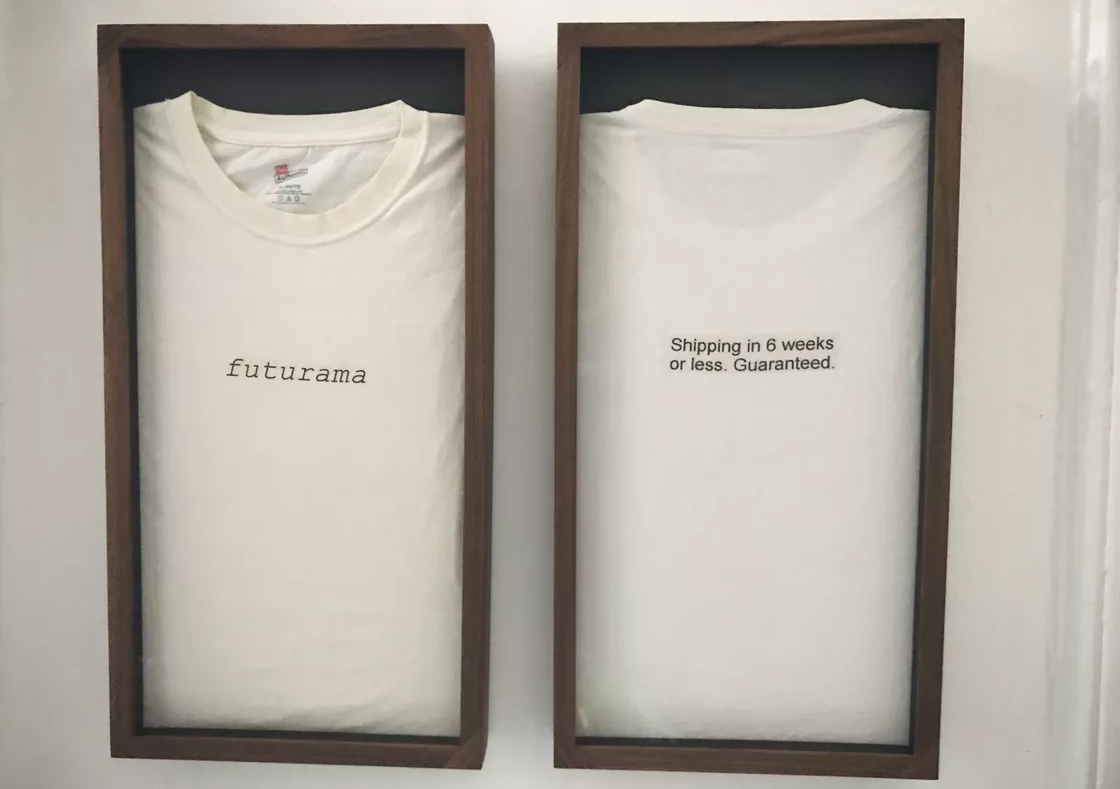
T-shirts that Prime’s team distributed to other departments, taking important team members from them
David Gellman (former Amazon Senior UI Designer)
We worked all night long. Five hours of sleep seemed good. I managed the project, and I worked 110-120 hours a week.
Greg Greeley
In December, I received an e-mail from one of the developers, “Greg, we are working so hard on this project, and I look at it as a shareholder, and I'm scared. I think he will bury the company. Did you count all the numbers for this new program? ”
Vijay Ravindran
This product was made on a whim. Graduates of business schools did not sit above the calculations, we did not keep crazy tables or detailed analysis. We just had confidence that we were smart enough to handle it. What we will understand and make so that this new system could somehow bring profit to the company.
Greg Greeley
Jeff once came and said, “We will call it Prime” (excellent, excellent). I did not like this name. I grabbed Chris Bruzzo, head of PR and marketing, and said, “This idea with Prime, I think, will not take off. Let's at least do a brand study. ”
And we chose about 20 names. Came to Bezos. We show - we say, this is the whole list, but those three that show themselves better than Prime. He read, and replies - “Yes, this is a great job. I agree with you. But I like Prime. ” And laughed.
For the first time in the 19 years I worked with Jeff, he ignored the recommendation. He was so sure that Prime was the best name.
Charlie ward
Well, because we are all computer geeks, we were delighted with the fact that prime is also the name of all prime numbers.
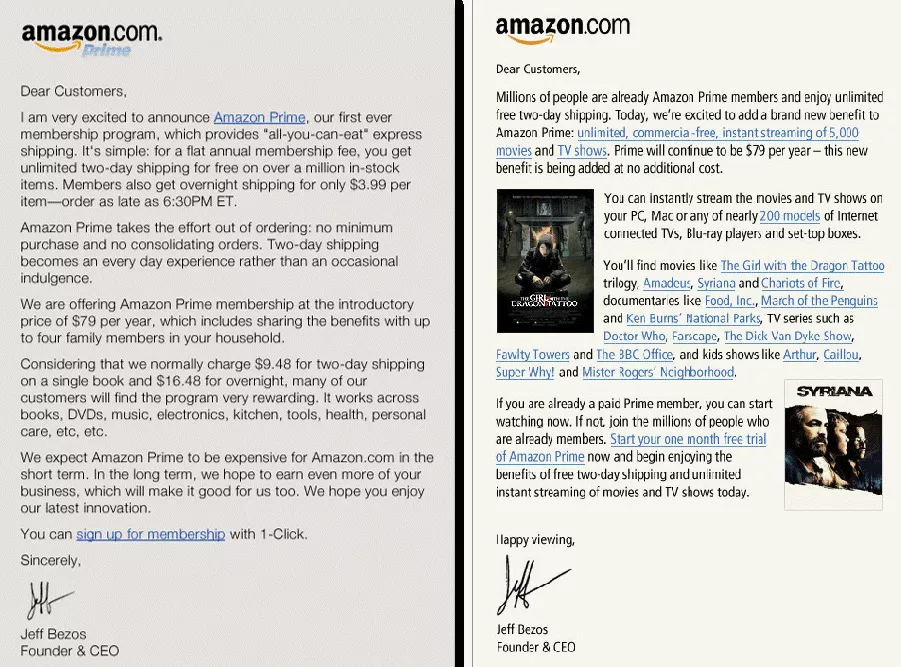
Jeff Bezos's letters to Amazon customers announcing Prime and Prime Video launches
Greg Greeley
People sometimes do not understand how big it was a bet. Could we scale this membership program if there were an influx of customers? Would they like such a system? And if you liked, could we make it profitable, or would we just start losing money on delivery at an enormous pace?
Vijay Ravindran
People probably don’t remember that Internet environment, now that Amazon and models built in our image are so dominant. But then we were really scared. Google had a project Froogle, and eBay sold many times more than we did.
In February 2005, Bezos introduced the Amazon Prime program: for $ 79 a year, you received a free two-day delivery of any quantity of goods, without restrictions. At the time, Amazon’s two-day shipping cost the buyer $ 9.48. So if you ordered only 9 packages a year, Prime has already paid for itself. “Even for people who can afford to order expedited delivery, this is a new level of luxury,” Bezos told Wall Street analyst in an interview.
With a new delivery platform, Amazon single-handedly — and permanently — raised the bar in terms of ease of online shopping. And it has forever changed the type of products that buyers are willing to take online. Now there is a sense in ordering just a couple of napkins or a bottle of water. Need a last minute gift? Are the diapers over? Why go to the store if there is an option with home delivery, at the same price or lower?
Inside the Amazon itself, there were many unhappy with the program. Managers did not like the fact that their projects were lowered in priority, and employees were taken from them to develop some kind of hidden system, about which they know nothing. Financiers were afraid that regular buyers or even competitors would begin to test the strength of the platform, ordering a lot of goods, which would eventually bankrupt the company due to shipping costs soaring into the sky. But in the end, the risk paid off. The number of clients of the site turned out to be the decisive factor for its success. Other companies that do not have such a cool offer, gradually began to fade into the background.
Michael Daring (former eBay top manager)
We had problems at the end of 2004 and the first half of 2005. Sales growth slowed down, friction began within the team. “Ideal” time to launch a new large project from competitors.
Prime was a very audacious idea, and we then understood what that meant. Amazon plays in a long time. They are not going to make a profit in the coming years, but they want to force buyers to be only with them. They think for decades.
I think there were a couple of moments in history when eBay made the wrong conclusions about Amazon. The first was - "Well, their business with auctions has not burned out, which means that they do not pose a big threat." The second is “The Amazon brand is tightly connected to books, movies and music. Who will buy clothes and electronics there? ”We were not stupid, we were realists. We thought that if they are good in a certain area, they will remain there.
But the difference was that if you look at those old letters from Bezos to shareholders, you will see how little they cared about their low margins, about the low price of their shares. Just work, work, work. Investments, investments in infrastructure. Belief in the fact that if you stand on the side of the buyer, everything else will take shape by itself.
This is the strategy of Sam Walton, the founder of Walmart. We were not lucky that we didn’t have Sam Walton or Jeff Bezos as the CEO.
Julia Todaro (former Amazon Financial Director)
As you can imagine, first of all, Prime was signed by those who already paid for the two-day delivery. They immediately realized that this was pure savings for them. It was the first wave.
Andrea Lee
I know it was very difficult for me to figure out how to get money from it. The subscription of these super-users and did not closely cover the costs on our part, especially for air delivery. We had to urgently change the supply chain, more efficiently distribute inventory, take into account where the demand for which products usually come from. Putting ourselves in such a situation, we had to jump even higher.
Julia Todaro
In Amazon, there was no panic, we did not lament losses. Jeff was not surprised. He is probably the smartest person on the planet. So we just kept, worked, and continued to monitor the behavior of buyers.
Amazon is an incredibly analytical company, but it does not rely only on what the numbers say. Jeff just saw Prime's strategic advantages in how good it is for customers. In other companies at this stage, they would say “Yes, buyers do what we want, but it is too expensive. Let's close this project. ”
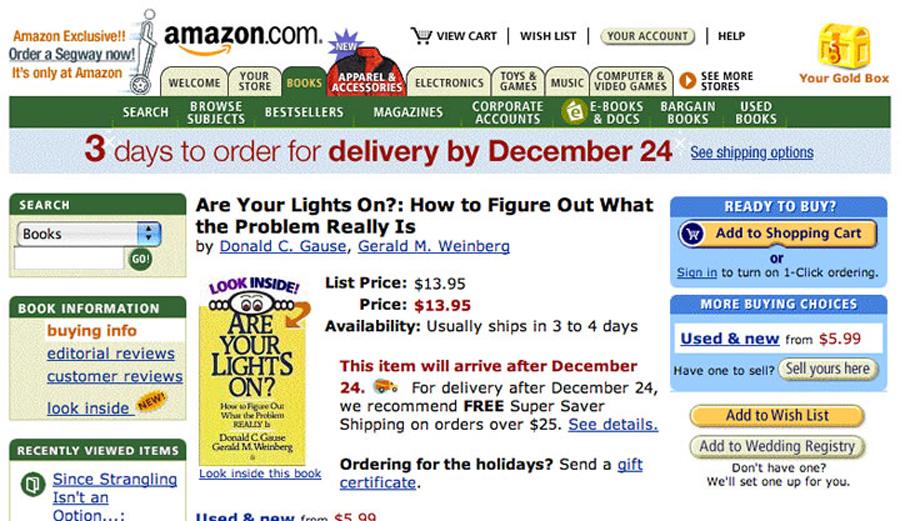
Amazon website in the early 2000s
In 2006, Bezos introduced the Fulfillment by Amazon system. Now anyone could trade on the site: sellers sent their goods to Amazon warehouses and stored them there for a fee. Amazon handled delivery. Such products could also come in two days - for customers with Prime. These conditions have become decisive for many traders. Now they could tell buyers that they offer very fast delivery, it was a huge advantage for them. And Amazon at times expanded the catalog of products available to members of the Prime program. As a result, now through the service complete by third sellers the site sells a lot more goods than the company itself.
Robbie Schwitzer (Former Vice President of Amazon Prime)
I remember thinking this was the end of eBay. They will not be able to deal with it. They have no experience to build such centers and conduct their operations as fast as ours. And they do not understand that it needs to be done.
Stephen Shure (First Vice President of Amazon Prime, current Vice President of supplier search systems for Amazon.com)
My team and I focused on improving the conditions for subscribers. Make delivery even faster, in more cities, for a larger list of products. Remove any bugs and anomalies. For example, it was much better if you ordered on Monday and not on Thursday. Monday’s order came on Wednesday, and Thursday’s order came on Monday, sometimes on Tuesday. We thought about how to make the client not feel that by buying now he makes a mistake.
When we crossed the mark of a million subscribers, we had a party. Usually we never had parties at Amazon ... Jeff went out and said that the next one would be for 10 million subscribers, and everyone laughed. It did not seem to us that it was possible.
Robbie Schwitzer
I remember what state everything was when I joined. It was generally unclear whether we could maintain this auction of generosity. In financial terms, this did not make sense. Mainly due to two extremes: heavy big things and very cheap goods. Free shipping of such is a big loss.
When someone buys a toothbrush for $ 3 and we deliver it in two days, there is no way to make it profitable, it is unrealistic. So we have created an additional program, where a part of goods with such a low price, if you want to tie them to your main order, they will simply come with it in the set. This is convenient for users: do not receive several different packages on different days.
And for large and heavy goods, we created the criterion that some products will be „Prime Standard“. Delivery for subscribers is still free, but it is not always two days. This gave us some flexibility.
The keys to turning Prime into a profitable program were to reduce the cost of delivery (and that’s almost everything, from warehouses to employees ’work) and increase margins, that is, optimizing all retail. So, it seems to me, Prime would not exist, and would not be what it is now, if we did not improve all the processes of the company, did not carry out innovations in every single area.
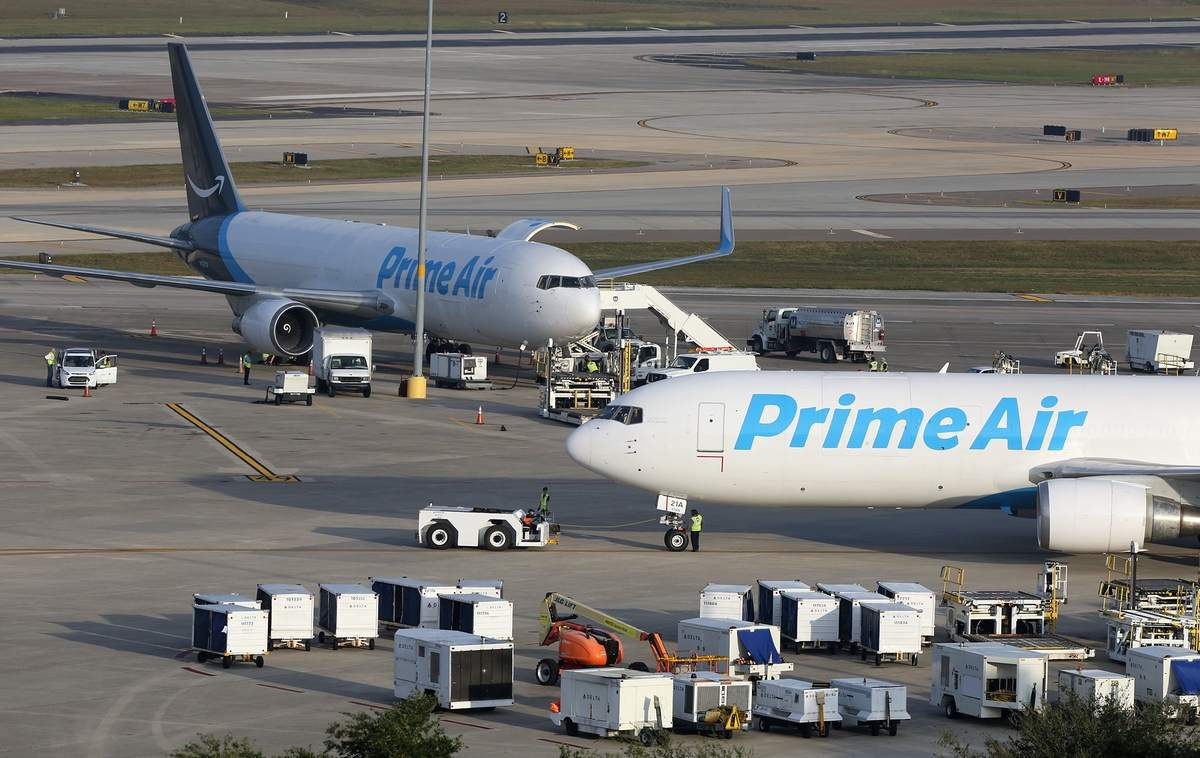
Mark Onetto (Former Vice President of World Operations at Amazon)
In 2006, most of our inventory was in the Midwest. The cost of delivery from the warehouse to the customer was about $ 1.50 per package. The cost of shipping by air was about $ 15. That is, sending by air was 10 times more expensive.
I remembered forever how I presented these numbers to Jeff Bezos and said, “This is how much Prime increases the cost of our delivery. In order to be in two days, we now have to deliver most of the orders on the aircraft. ” And Bezos replied, "You think wrong."
And yes, I did not take into account the global and scale. If users liked Prime, the demand would increase. And if demand had grown enough, we could build new warehouses and centers closer to customers.
That is why he is a genius, and I simply manage operations.
Julia Todaro
If you are a student, you have received Prime for free for a year. Then we made it 6 months. We also have special offers for small children.
This is critical. Twice in your life, when you have the greatest chance of changing your attitude to shopping — this is when you become a student (and you leave home for the first time), and when you have children. We control both of these stages. You become tied to Amazon, and your children too. They see and know that this is the best place for them to buy what they need.
Dorothy Nichols
We were arguing about whether Prime should be given free to household members. But who lives in this house? How do you confirm this?
I was on the side of the fact that people are initially good, and those who try to deceive the system will not be so much. And if someone is deceiving us, let's take a look at the patterns of their behavior, calculate them, but we will not interfere with honest customers.
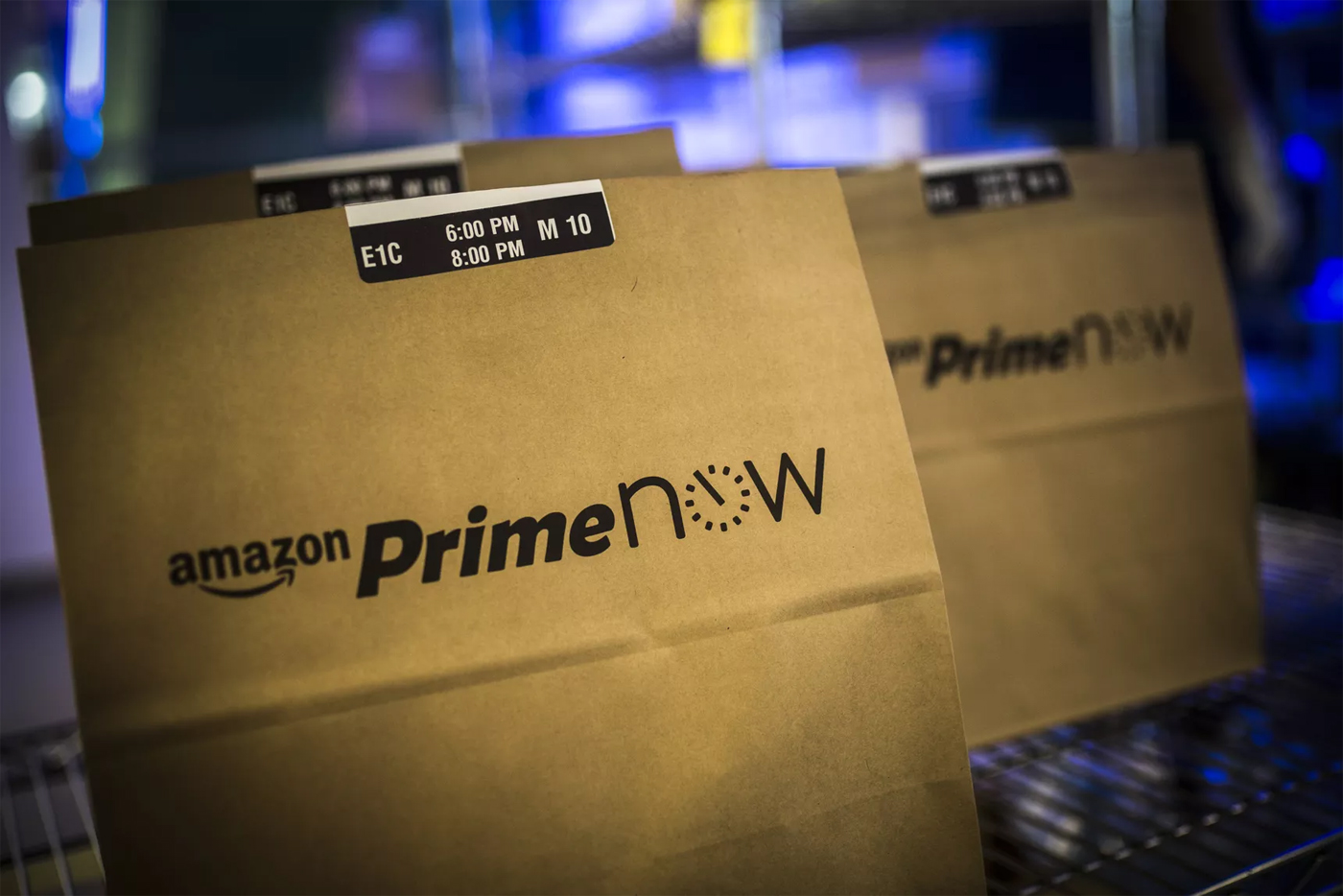
Service Prime Now in Berlin
Andrea Lee
Prime took a very long time to take off. Until they combined it with the digital video package and all the other bonuses, in fact it didn’t take off. The system was definitely growing, but it took much longer than people think.
Stephen Shure
Yes, then, of course, came Prime Video and Prime Music. Get the opportunity to stream videos and TV shows, in fact, for free, complete with Prime, it has changed a lot. It was not Netflix, but in 2011, few people offered this anyway. And for free and legally - no one.
Bill Carr (Former Vice President of Digital Music and Video at Amazon)
Netflix had a big budget that scared us. Don't laugh, please. They spent $ 35 million a year on video content. A stable figure, never more, never less. They went and bought the rights to movies and TV shows. It didn’t matter to them, they have one viewer or one hundred million viewers, this is how much they paid. But we at Amazon could not work on such a business scheme.
It was not easy - to commit ourselves to a fixed payment for content, not knowing whether we can actually get at least some subscribers. In 2008, the 9th, 10th year, it was a lot of money for us.
And I remember, Jeff finally said, "I have an idea." And, in his usual manner, he chose something that was not at all in the discussion. "Let's make it part of Amazon Prime." And we looked at him as if his legs began to grow from his head. Like, “What are you talking about? Prime? Free delivery program? What does she have to do with it? ”
But the principle that Jeff understood was that we had to do what Netflix did at the beginning of its journey. Then everyone also looked at them with a sneer - “Do you offer digital video plus DVD, and you don’t charge extra? How are you going to survive? ”
Netflix was able to grow precisely due to the fact that their service was a bonus. Digital content in the beginning was not particularly good, but it was free, and, of course, none of the users would be against that. Like, "Oh, by the way, here, here are some films in addition to this." And we went the same way.
I remember Jeff used literally these words - this is “Oh, by the way.” “Yes, Prime costs $ 79 per year. Oh, by the way, there are also free movies and TV shows in addition to it. ” Even if our films and other content were not of the highest quality, who would complain, considering that it was free?
Jeff Wilke (Jeff Bezos's right hand)
At that time, we said, this is the best deal in shopping history, and now we make it even better.
And we saw that the customers who watched the film, which they adore, then buy more Tide products. They spend more time on the site, they are more likely to extend Prime, they often convert the free trial into a full subscription. Video viewers began to tell us through their actions that digital content is an important part of our Prime package.
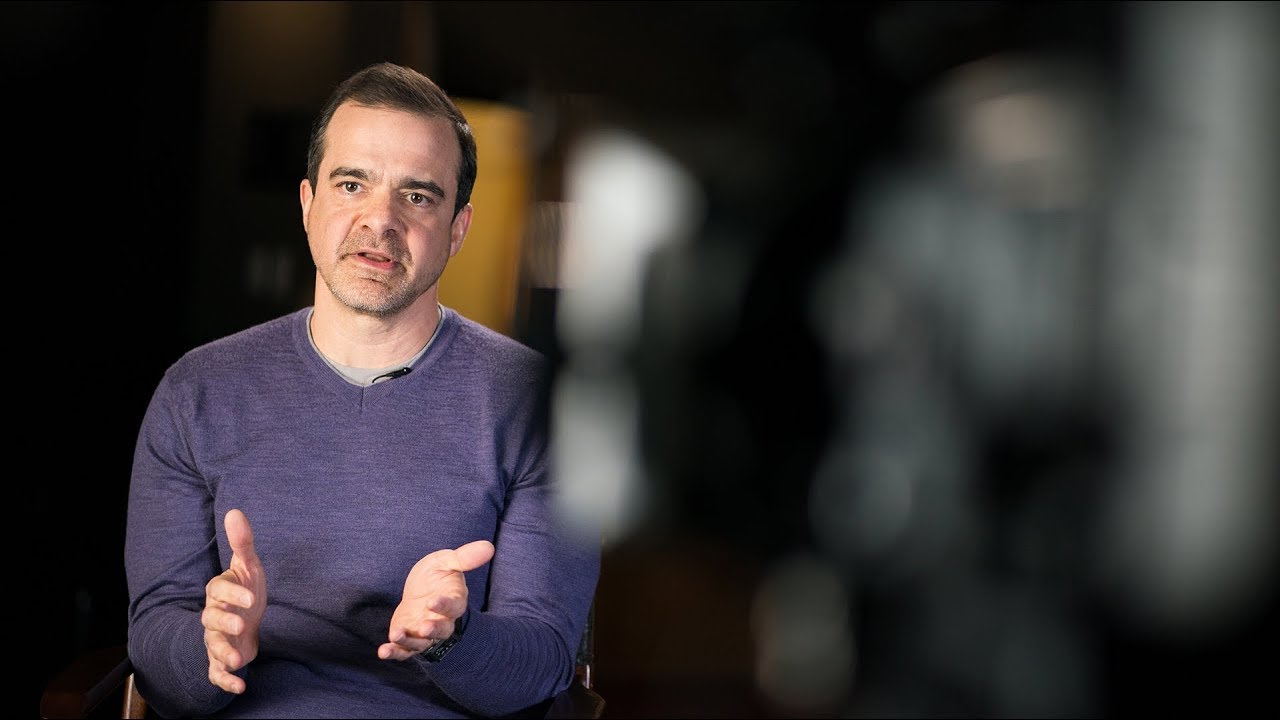
Jeff wilke
Now the Prime Video service has become much more and divided into several parts. Amazon creates its own movies and TV series called Prime Originals, available only to Prime users. All others can rent or buy iTunes-style content. And Amazon Channels allows you to subscribe to content from networks like HBO and Showtime for a small monthly fee.
Bill carr
When we added HBO, we were happy. We had them, but Netflix didn't have them. I can't remember the exact numbers, but something like after the launch of HBO, from the top 50 TV shows on Amazon Prime, 40 of them were from HBO.
In 2014, Prime Music appeared, streaming music, and Prime Now delivery - two-hour delivery of goods within megalopolises. Both services are free for Prime subscribers.
In 2015, Prime Day appeared - a big holiday of discounts and sales, a special day in the middle of July with big discounts on thousands of products available, again, only for people with Prime.
In April 2016, Amazon began allowing users to get Prime Video a bit cheaper, without a full subscription to Prime. But the essence of the service remains the same: to pick up people with movies, and make them buy on the site more often, forgetting about the competitors.
Greg Greeley
It was a huge bet, many people did not think it would ever pay off. In the end, we set a goal for ourselves: what needs to be done to get more than 100 million subscribers worldwide?
We began to see how people react very positively to video content. I went to all Amazon departments and said, “Hey, Prime is an opportunity to give our premium customers the best that Amazon has. Do you have something to add to Prime? ”It became a car, a train that gained more and more cars. And he gave traction to those parts of the business that connected to it.
Somewhere in 2014, it became the goal of our entire team. , , , , Prime , Prime Reading. Kindle, Twitch .

16 2017 Amazon -, Whole Foods $13,7 . . , , , , , Prime. , 5% 2- . , Amazon . – Whole Foods Prime, .
2019- Amazon , Prime, . , - , . Prime . Target Walmart , .
«» Prime Prime Day – , 15 . , , . Prime Day , ( , ) Amazon Prime. Amazon, , .
Prime Day Amazon . – - . , 77% Prime Day , . Amazon 200 , 1 2 .
Andrea Lee
I think they will not stop there. No speed and no number of subscribers will be enough for Amazon. Until my purchase is brought in, say, ten minutes straight to my door. They will grow, become faster and faster. That has always been the goal.
Source: https://habr.com/ru/post/460060/
All Articles